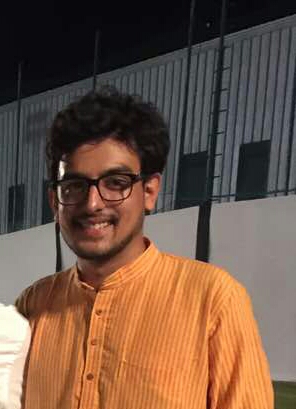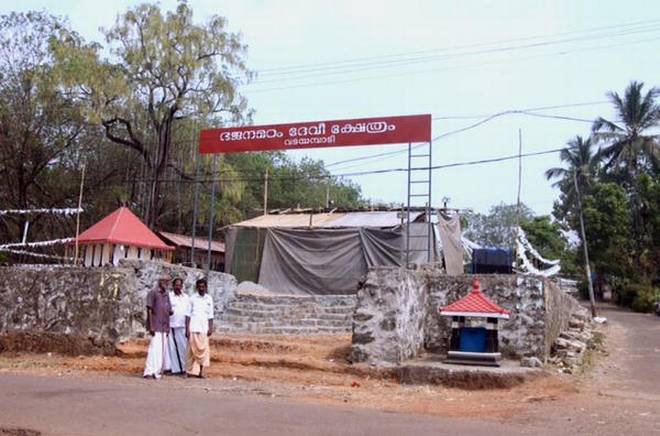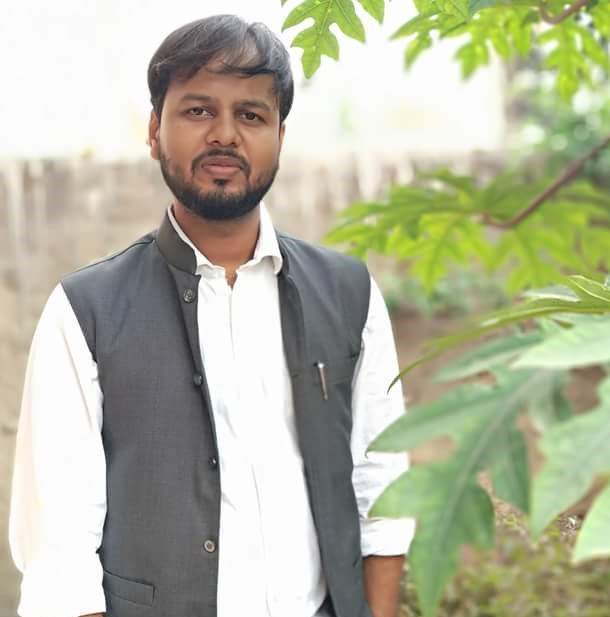Parth Shrimali
 On 14th August, a day before the 71st Independence Day, a Dalit man was assaulted in Sojitra village in Anand district of Gujarat for skinning a dead cow. Earlier this year, in May, caste violence led to the torching of 25 Dalit houses by Rajput men in Saharanpur, Uttar Pradesh. In July 2016, 4 Dalit youth were flogged for skinning a dead cow in Una, Gujarat. A month later, two Dalits were beaten up in East Godavari district of Andhra Pradesh for skinning a cow, killed due to electrocution.
On 14th August, a day before the 71st Independence Day, a Dalit man was assaulted in Sojitra village in Anand district of Gujarat for skinning a dead cow. Earlier this year, in May, caste violence led to the torching of 25 Dalit houses by Rajput men in Saharanpur, Uttar Pradesh. In July 2016, 4 Dalit youth were flogged for skinning a dead cow in Una, Gujarat. A month later, two Dalits were beaten up in East Godavari district of Andhra Pradesh for skinning a cow, killed due to electrocution.
Over the course of the last 70 years, India has made tremendous progress. From a country that could barely feed its own people to a potential economic giant, India has engineered a dramatic turnaround of its fortunes. Yet, 70 years later, the question that continues to persist is this – prosperity, development and independence for whom?
On the question of Dalits
Violent attacks on Dalits are hardly anything new. Newspapers are rife with reports of assaults against Dalits, either by riots or by the ritualistic protection of Savarna ‘honour’ which often translates into death for Dalit men and rape for Dalit women. More repulsive than the grisly nature of these acts of violence are the reasons which ‘provoke’ these and the impunity enjoyed by perpetrators.
Tamil Nadu1 in December 1968, witnessed the massacre of 44 Dalits, including 16 women and 23 children, for making a union and striving for better wages under the red flag of CPI-M. In Tsundur, Andhra Pradesh2, 8 Dalits were massacred in 1991 after 300 well-armed Reddy men launched an assault allegedly provoked by two incidents2 – a Dalit youth whose only fault was that his feet unintentionally touched a Reddy man in a movie hall and another who was seen reading a newspaper at a barber’s shop. In 1996, 21 landless Dalits including women and children were massacred in Bathani Tola, Bihar by members of Ranvir Sena, a private army of upper-caste landlords formed in 1994. A year later, 61 Dalits were massacred by the same organisation at Laxmanpur-Bathe. In both these cases, not a single accused has been convicted till date3. In 2005, 1500-2000 Jats in Gohana tehsil in Sonepat, a Haryana district4 barely 60 kms from Delhi, burnt down around 60 Dalit houses. About 150-200 police persons stood witness to the assault which lasted for about four hours. A year later, 4 Dalits from a Mahar family were massacred in Khairlanji, Maharashtra. In April 2010, about 1000 Jats in Mirchpur village5 near Hissar, Haryana burnt around 18 Dalit households leading to the death of two people.
These incidents aren’t simply caste atrocities but episodic reminders of a deeply casteist society whose edifice is built on a violent suppression of Dalits, Adivasis, minorities and women. The violence of this suppression goes beyond just physical manifestations.
Dalits’ tryst with ‘development’
Data from National Crime Records Bureau shows that cases registered under Prevention of Atrocities Act have been rising in the past decade. From 8581 cases recorded in 2006, the number of cases recorded in 2015 has climbed to 38,564.
Socio-Economic and Caste Census (SECC), 2011 reveals that 1,82,505 persons in rural areas across the country and 12,226 in urban areas of 12 states6 are still engaged in the practice of manual scavenging, a practice that has been prohibited by law since 1993. We cannot even bring ourselves to utter the word ‘shit’, using the euphemism ‘night soil’. But have rendered the duty of cleaning human excreta, with their bare hands, to about 2 lakh of our fellow humans.
According to the Indian Exclusion Report presented by the Centre for Equity Studies, Delhi, Dalits have the highest rate of landlessness among different social groups in the country at 57.3%. Only 2.08% Dalit households own more than 2 hectares of land. 58% of land held by Dalits has no irrigation facilities. Adivasis constitute 40% of all those displaced by “developmental activities”, including mining and dams. The report shows that land reforms have not reached Dalits with land distribution often happening only on paper. In a lot of cases, possession was not transferred to Dalit households and where it was, allottees were forcefully evicted.
83.55% of Dalit households surveyed by the SECC 2011, urban and rural areas combined, earn less than Rs 5000 per month. For Scheduled Tribes, this figure is 86.53%. Households earning more than Rs 10,000 per month are a paltry 4.67% and 4.48% for Scheduled Castes and Scheduled Tribes respectively. Although the SECC statistics indicate that among households other than SC/ST households, 70.29% earn less than Rs 5000 per month, this data does not capture the differences accurately since Other Backward Classes especially its ‘non-creamy layer’, are included in this group. These statistics, however, go on to show that even within economic inequality, Dalits and Adivasis are the worst affected. Given these markers of material deprivation, it is hardly surprising then that the data on education would be as skewed.
Among persons with academic qualification of graduate or above, Scheduled Castes and Scheduled Tribes constitute a meagre 8.12% and 2.58% respectively. Only 2.75% of all SCs and 0.23% of all STs have an education qualification of graduate or above. A question arises here – what happens when Dalits and Adivasis do manage to get past the gates of these hallowed portals of higher education?
Dalits in universities
The Thorat Committee in AIIMS and the parliamentary committee on implementation of reservations in JNU have given official credence to the perpetuation of explicit and implicit casteism on university campuses. These reports do little more than scratch the surface. From being made to feel worthless for availing reservations to segregation of hostels; from being jeered at for ‘lower cut-offs’ to insensitive, and often derogatory comments, during debates on reservations; from being mocked at on our lack of proficiency in English to being ridiculed in vivas. The truth remains that universities, just like our ‘progressive’ urban societies, are not isolated from casteism but often its most virulent breeding ground. Except that here, casteism plays out not in the form of rapes and murders, but in ‘intellectual’ debates and bigoted perceptions.
In recent times, caste on campuses has manifested in its worst forms. Suicides among Dalit students are on a rise. Rohith Vemula’s suicide in January 2016, jolted the entire nation out of its insouciance. How did we respond? By debating on his caste. His birth was indeed his fatal accident. Harassed for believing in the philosophy of Babasaheb and practicing his politics on a campus which has seen significant number of suicides by Dalit students7, Rohith Vemula was driven to a point of helplessness which ultimately culminated into his suicide. Muthukrishnan, a Dalit student from JNU, committed suicide in February 2017. In 2008, a PhD scholar, Senthil Kumar, took his own life citing depression emanating from caste based discrimination as the reason. The list is endless. Anoop Kumar (former student of JNU and a Dalit activist) and his team compiled a documentary of 18 Dalit students, between 2007 and 2011, who had committed suicide owing to discriminatory practices – with different perpetrators in each case. The names of Rohith and Muthukrishanan have now been added to this list. The 2011 documentary, titled Death by Merit, is a heartbreaking rendition of discrimination narrated by wailing parents of the deceased.
Our tears do not matter. Our lives do not matter. Our existence does not matter. What matters is ‘merit’ – a hollow Brahminical ‘merit’ – which has become a tool for maintaining the ‘purity’ of the sanctum sanctorum of educational spaces.
Mutating Casteism
The condition of Dalits has definitely improved since Independence, especially after the enactment of the Constitution in 1950. Right to equality has been legally accorded and untouchability has been banned. Political reservations as well as reservations in jobs and education have certainly helped. Acts against atrocities, protecting civil liberties and banning manual scavenging have given legal redressal mechanisms, at least on paper. But the question is – is it enough?
70 years after Independence and 67 years after drafting a largely progressive Constitution, we have not been able to eliminate caste based discrimination which has mutated into different forms.
Now, we may not be outrightly excluded from education because the Constitution prohibits it. But when we do enter, we can still be discrimination based on ‘merit’. We get ridiculed for our language, for our dressing and for our eating habits. Exclusion automatically follows from the differences in our socio-economic backgrounds which are invisible to students who rarely acknowledge their own privileges. In the circumstance where one of us comes from a family that defies the traditional caste-borders of economic class, because our parents put in back-breaking labour to liberate themselves, we become poster-persons of the Savarna arguments against reservations.
Reservation in government jobs and education is vociferously opposed by a majority of the upper-castes but there are no questions raised on the ‘reservations’ in manual scavenging.
The skewed representation of Dalits and Adivasis in academia, media, high-paying jobs, etc. would hardly seem a caste problem but when Dalits assert their rights and fight for equality through political platforms, we are accused of engaging in ‘petty’ identity politics.
Untouchability may have been constitutionally outlawed but marrying outside caste is still unacceptable. And then we have the audacity to blame the visibility of caste in democratic politics, which is inherently interest based politics, and the policy of reservations for being the prime reason for the perpetuation of caste.
The truth is that our mindsets have not been cured of the rot of casteism. Unless the rot is cured from our collective social mindset, no amount of legal or political solutions are going to help. Caste is not solely an identity – it is much more than that. It is an identity that manifests in distribution of resources – social, economic and political. It is an identity that doesn’t spare you from discrimination if you move up a few rungs on the economic ladder. Caste-blindness won’t help. Parochial pursuit of caste interests or caste pride won’t help. Caste-consciousness and caste-sensitivity, will.
Those who have understood the problem of caste, have indeed been comrades in the struggle against casteism. However, coming for protests, giving solidarity calls and standing up for the rights of Dalits in academic journals and news articles will do no good unless you also stand up against your families, friends and acquaintances in other social circles when they resort to casteist practices, casteist comments and any other forms of caste based prejudices. If you indeed want to fight against caste, fight it in every sphere, on every turf.
If you cannot do so, don’t try to fool us or yourselves. We need you but to spread our word. If you do not, we will make ourselves heard nonetheless; for liberation cannot be ‘given’ to us. For us Dalits, and other oppressed sections, only our struggles will liberate us. And struggle we will. In the words of Ambedkar, “Ours is a battle not for wealth; nor for power, ours is a battle for freedom; for reclamation of human personality.”
~
Notes
1. http://www.thehindu.com/todays-paper/tp-national/tp-tamilnadu/farmers-pay-tribute-to-kilvenmani-victims/article4951771.ece
2. http://indianexpress.com/article/india/india-news-india/24-years-on-this-ap-village-still-cant-put-massacre-behind-it/
3. http://www.firstpost.com/politics/laxmanpur-bathe-massacre-no-one-killed-58-dalits-1166975.html
4. https://roundtableindia.co.in/index.php?option=com_content&view=article&id=4711:dalit-houses-burnt-down-at-gohana-in-haryana&catid=122&Itemid=138
5. https://scroll.in/article/828484/in-mirchpur-murderous-caste-violence-returns-to-haunt-a-haryana-village-after-seven-years
6. http://pib.nic.in/newsite/PrintRelease.aspx?relid=133286
7. http://www.hindustantimes.com/india/suicides-of-dalit-students-not-new-in-hyderabad-university/story-cbPCCWPAF98q22uDihzb9L.html
~~~
Parth Shrimali completed a post-graduate diploma in Liberal Studies from Ashoka University and holds a dual degree from IIT Bombay.










